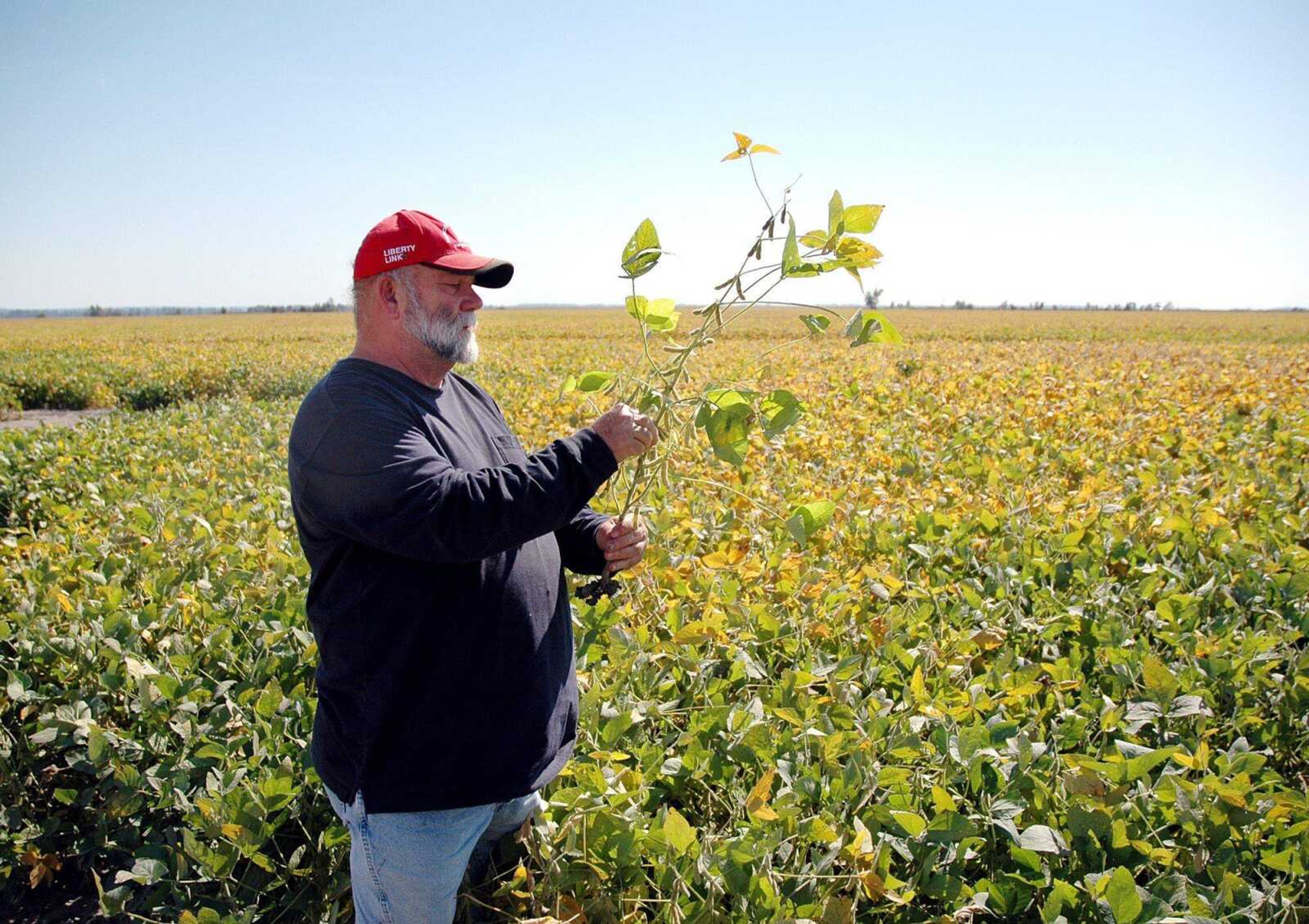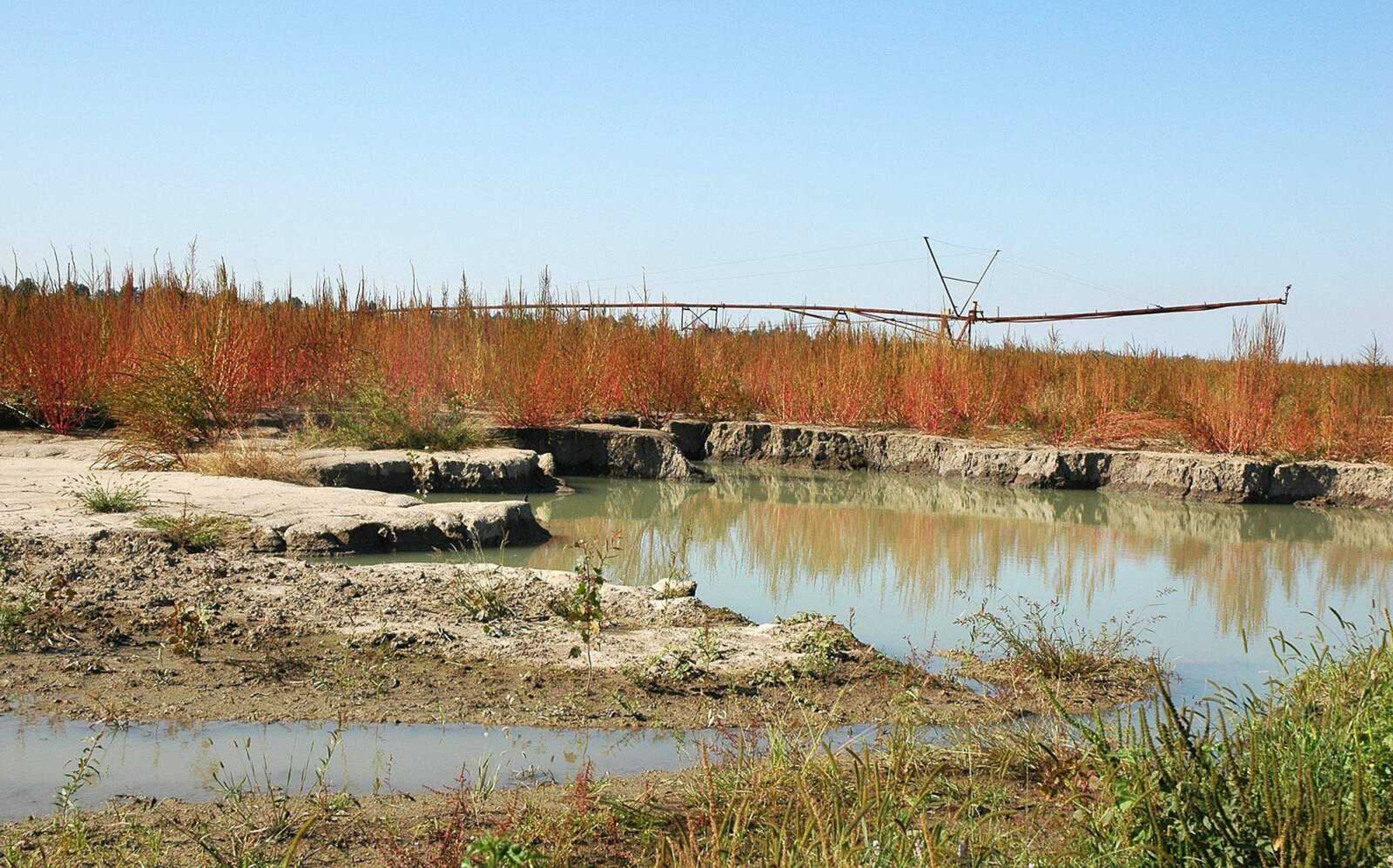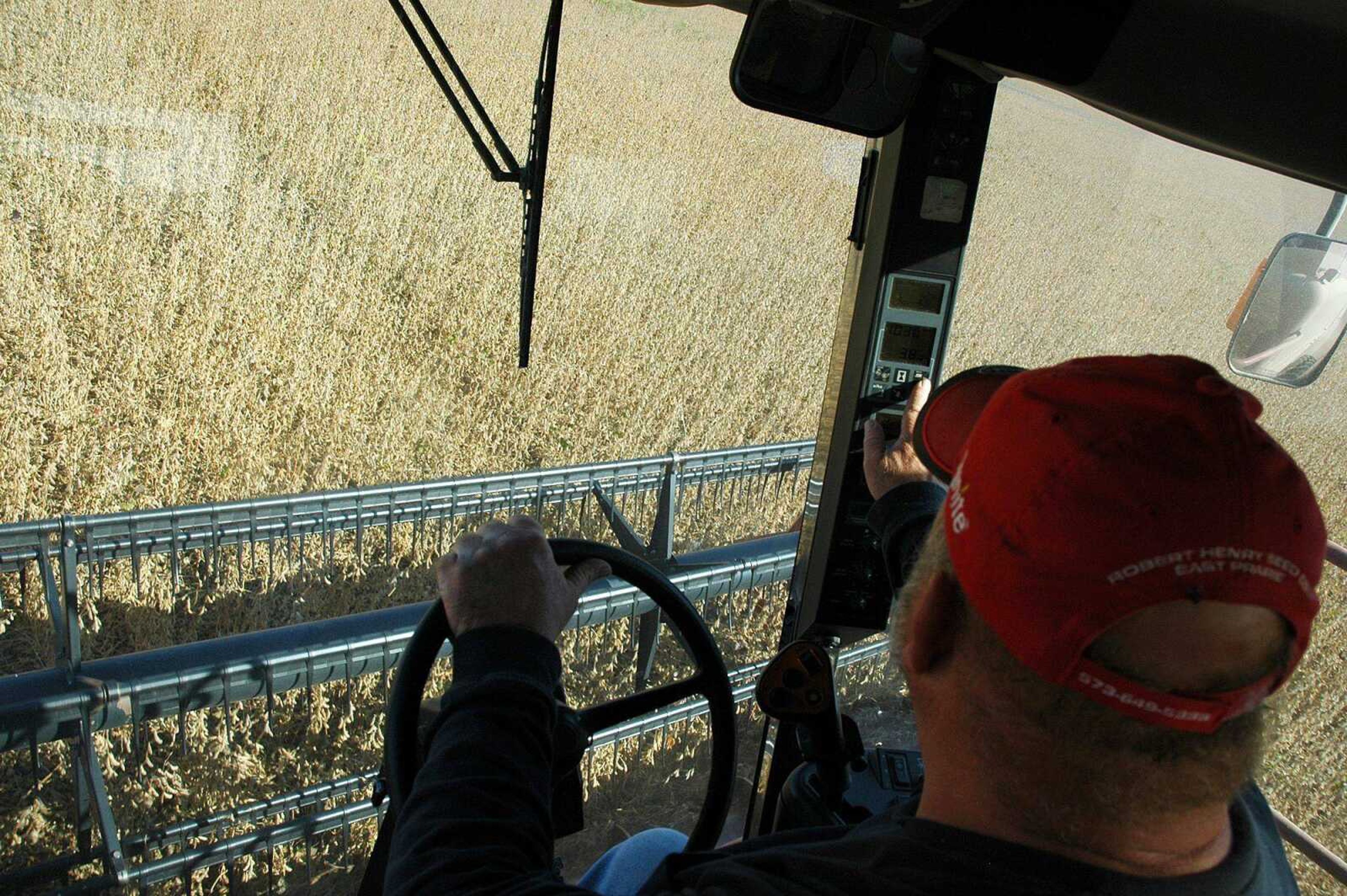Floodway farmers begin harvest of soybeans planted after levee breach
As Steve Wright's combine rolls through golden fields of soybeans, he remembers crossing those same fertile fields in a boat just days after the Birds Point levee breach. "People that don't live here don't know what it means. It's not just a piece of ground. It's your heart and soul," said Wright, who manages Glen Hillhouse Farms near Wyatt, Mo...
As Steve Wright's combine rolls through golden fields of soybeans, he remembers crossing those same fertile fields in a boat just days after the Birds Point levee breach.
"People that don't live here don't know what it means. It's not just a piece of ground. It's your heart and soul," said Wright, who manages Glen Hillhouse Farms near Wyatt, Mo.
He said he'll never understand why the U.S. Army Corps of Engineers didn't just let nature take its course.
As much as 23 feet of water covered the floodway fields Hillhouse has tended for years after the corps intentionally breached the Birds Point levee the first week of May in an effort to mitigate flooding upstream.
Most farmers didn't think they'd even get a crop in this year, but signs of a successful harvest now fill the floodway. Yields are below average, but Wright, who manages about 1,200 acres in the floodway, is just thankful to be harvesting a crop this year.
It took about two months for the waters to recede, leaving a muddy mess for farmers to clean up, Wright said. It was too late to plant corn, which is traditionally grown in that area.
"Some of the best corn ground in the world is right here," Wright said. "We didn't get an acre of corn in."
Anthony Ohmes, regional agronomy specialist with the University of Missouri Extension Center, said the 130,000-acre floodway was planted in soybeans this year with the exception of a little milo in a few places. Wright estimates about 4,000 acres of the floodway were damaged too severely to be planted at all this season or still have standing water.

In places, formerly flat land was left wavy by the scouring of floodwaters. Fields were littered with driftwood. Wheatfields were matted with mud. Wright lost 160 acres of wheat just half a mile from the first breach site, a crop that would have yielded more than $100,000.
"I've never seen anything like it," Wright said. Farmers tried to burn off their fields, "but a lot of it didn't burn because it was still wet. We just started picking chunks up. We spent a lot of time chunking."
Wright said he and other farmers in the area worked day and night to clean out clogged ditches and get their fields ready to plant again.
By June, he was able to start planting soybeans, although it was a month later than usual. He finished planting his last floodway field on July 11.
He planted right up to the makeshift shores of the floodwaters in many places, leaving about 50 of his 1,200 acres without crops this year.
"We got some pretty beans down here, considering they were planted so late," Wright said. "All we've got to hope for now is a late frost."
Wright began harvesting soybeans in the floodway last week and is seeing yields of 40 to 45 bushels an acre. Last year he saw yields of 70 or so bushels an acre.
"We can't blame it all on the levee," he said. "We had two months here without a drop of rain."
As in any year, some areas show signs of stress from dry conditions, Ohmes said.
"Later-planted beans that were developing pods when we got some of that August and September rain are looking good. As we get deeper into harvest, I think beans will be OK," he said.
"In some areas, there was no erosion and no sand deposits. In other areas, like O'Bryan's Ridge, it was devastating," said Gene Stevens, crop production specialist at the University of Missouri Extension's Delta Research Center in Portageville, Mo. "Some fields, to look at them you'd think there was no damage, but the beans in them were stunted."
That was the result of sheet erosion, Stevens said, in which water rushed over the land and stripped the topsoil off.
Nutrients in the floodway were also lost because of the length of time they were underwater.
"The longer water stands on a field, the less phosphorus will be left there," Stevens said.
The O'Bryan's Ridge area sustained some of the worst damage from the levee breach. Some fields where crops once grew now have canyons cut down the middle. Water is still standing in them six months later. The twisted metal of a washed-out bridge is still on its side in the ditch off County Road 310.
Farther south, near the final levee breach site, several feet of sand deposits still covers fields.
As the corps continues work to put a temporary levee in place at the first breach site, floodway farmers are still anxious about the future. Typically, the Ohio River level gets into the single digits during the summer, but this year it has stayed high, about 19 feet at the Cairo, Ill., gauge.
"The levee has got everybody gun-shy," Wright said. "A lot of people are scared to plant winter wheat."
The temporary levee, scheduled to be completed by Nov. 30, will be 51 feet high, while the previous levee was 62 feet. Wright and other floodway farmers are worried that won't provide enough protection.
Crop insurance rates have also doubled in the area compared to last year, Wright said.
As Wright makes his daily rounds in his pickup truck to check on crops, it's a rough ride. Parts of many roads in the floodway are completely washed out. The corps dumped gravel on those places to keep a direct route open for its own trucks hauling dirt to repair the levee. Wright's shop building still stands, although the shop doors and many of its metal side panels were washed away. He's going to try to save it, he said, but like many other homes and buildings in the floodway, it wasn't covered by flood insurance.
Wright recently dug out a building foundation for a fellow farmer rebuilding in the floodway, although he's moving his headquarters farther away from the river.
"The people around here is just good old country people. Everybody's pitched in and helped everybody out. It's neighbor helping neighbor," he said. "That's just what you got to do."
No two years of farming are ever the same, he said, but he hopes he never has to see another one like this.
"It was a nightmare," he said.
mmiller@semissourian.com
388-3646
Pertinent address:

U.S. 60, Wyatt, MO
Connect with the Southeast Missourian Newsroom:
For corrections to this story or other insights for the editor, click here. To submit a letter to the editor, click here. To learn about the Southeast Missourian’s AI Policy, click here.










